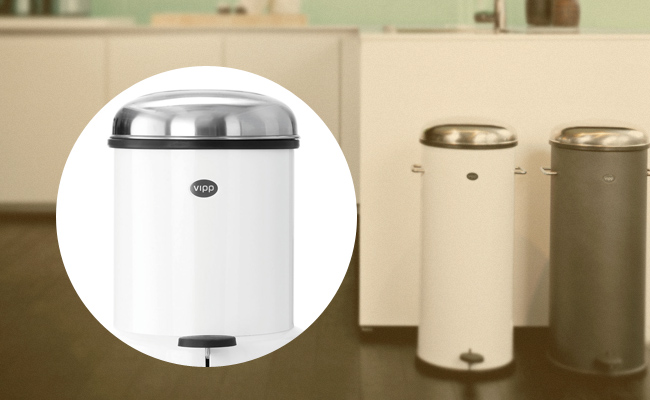10 Things You Never Knew about Trash Cans
In day-to-day life, people don’t think a lot about garbage cans. They are one of those things we take for granted until we actually need them. But that’s unfortunate, because the history of modern waste disposal is both interesting and enlightening. From the practices of ancient Native Americans to today’s high-tech waste management industry, it is remarkable how humans have learned to deal with their garbage. Art exhibitions and modern designers have even elevated garbage cans to works of beauty. These days, trash cans aren’t just a way to get rid of our food wrappers – they can be a clever way to advertise a business or cause.
Cool Facts from the History of Garbage and Garbage Collecting

Garbage has been around as long as humans have roamed the earth, and there are actually people who study it! Here are some interesting tidbits from the course of human history:
- Garbage is an area of academic study. The history and science of garbage has been studied for many years by experts known as garbologists.
- We’ve found many creative ways to get rid of our trash. Over the course of human civilization, people have dumped, buried, burned, and recycled in an attempt to remove garbage; luckily, we are now putting more and more effort into reducing waste.
- We don’t necessarily create more waste now than we did millennia ago. As early as 6500 BC, Native Americans, in what is now Colorado, may have produced about 5.3 pounds of trash per day – more than the average New York City resident generated in 1911.
- The Mayans had some interesting waste-disposal methods. They boasted exploding, burning trash dumps and solved their in-home garbage issues by simply covering them with dirt. Out of sight, out of mind!
- Dumps are totally classic! Athens, Greece created the first municipal dump in approximately 500 BC.
- Littering is worse than you realize. If you don’t think waste management is important, consider that the lack of an effective disposal system likely played a major role in the spread of Bubonic Plague. When people throw their garbage out the window, it tends to create a wonderland for rats.
- One man, one can. Peter Durand patented the “tin can” in 1810, setting the stage for the beginning of the trash can as we know it today.
- Oh, America. As recently as 1908, Americans were disposing of garbage in bodies of water, along the ground, and by feeding their food waste to pigs.
- We may owe modern recycling to a world war. The scarcity of resources caused by World War II resulted in a push for Americans to start recycling paper, rubber, scrap metal, and tin cans.
- The government got their hands dirty with waste management. The 1965 Solid Waste Disposal Act and the 1970 formation of the Environmental Protection Agency ushered the U.S. into a new era of dealing with trash.
The Garbage Can Revolution

Since their humble beginnings, garbage cans have become a mainstay in the lives of modern Americans. They keep refuse away from of our nice, clean homes while we wait for the garbage collector to take it away. In public, garbage cans give us a place to throw our trash so we don’t just drop it on the ground.
Garbage cans are a functional necessity, but they can also be beautiful. In 1930s Denmark, Holger Nielsen set out to create the Vipp bin, an attractive trash can for his wife’s beauty salon. Five years earlier, the Museum of Modern Art debuted its “Machine Art” show, which treated industrial implements, like trash cans, as objets d’art. The exhibition horrified art critics, but delighted the public – and isn’t that what good art should aim for?
Since Nielsen’s pioneering garbage can design, designers have created bins in materials ranging from metal to rubber to plastic, and in every size and shape imaginable. Considering the success of the industrial art revolution, the Vipp bin, and its well-designed descendants, it’s safe to say good-looking garbage cans can generate some big business.
Putting Your Brand on a Garbage Can
Advertising on trash cans can be both affordable and effective. Strategically-placed bins in public areas are highly visible and used by virtually everyone. When you have spent the past ten minutes looking for somewhere to put your candy wrapper, smart advertisers know seeing their message on a trash can associates their company with convenience and relief. Garbage cans are also an effective location to display important social messages.
Public garbage cans can even be engineered to maximize the impact of the advertisements they carry. Specially designed trash cans, like Securr’s, are optimized for the right size and placement of an advertisement. The durable construction of these trash cans stands up to the elements and protects your advertising investment.
But it’s not enough just to have your brand on a garbage can; you also need to create an ad that will keep your audience’s attention after they’ve disposed of their waste.
Here are some tips to consider when creating a garbage can advertisement:
- Location, location, location! Make sure your garbage can is placed in a high-traffic area frequented by your targeted audience.
- Bigger isn’t always better. Securr garbage cans are designed to accommodate advertisements in sizes that grab attention without being obnoxious.
- Be clever. The most memorable ads make people laugh and think. Clever catch phrases – or even trash-related puns – are smart ways to keep your message in the mind of your audience.
With the right concept, placement, and design, you’ve got the recipe for a garbage can ad that potential customers won’t soon forget.
Tell Your Friends!
From ancient trash heaps to clever modern marketing vehicles, the history of garbage disposal is as fascinating and creative as it is practical. If you find the evolution of waste disposal as captivating as we do – or simply want to boast about your knowledge of Mayan trash exploding methods – share this with everyone you know on Twitter or Facebook.